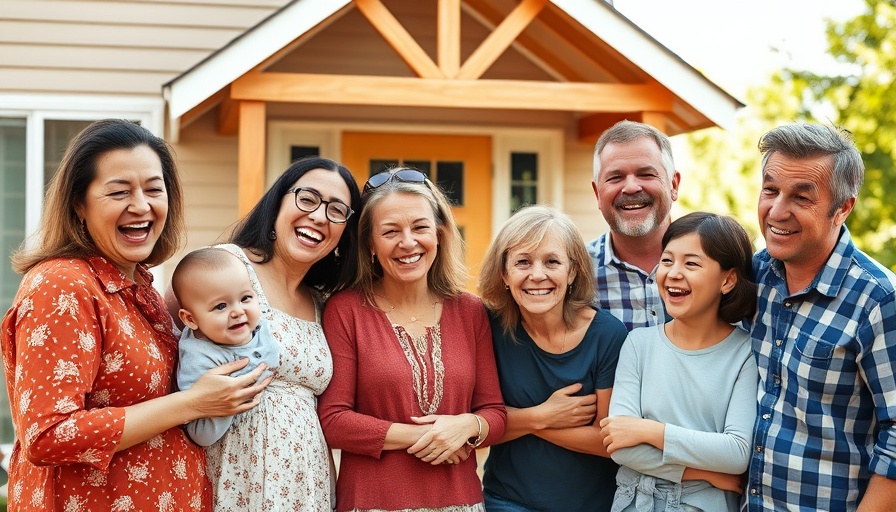
Introducing the Complex Decision of Cohabitation
The decision to have an elderly parent move in can often evoke a mix of emotions and practical considerations. With longer life expectancy and the complexities of aging in today’s society, families are increasingly navigating these challenging choices. On one hand, a close living arrangement presents an opportunity to provide direct care and companionship; on the other, it raises concerns about personal space and family dynamics.
Pros of Living Together: The Heart of Family
Increased companionship emerges as one of the most notable advantages. Having a parent nearby can not only enhance the emotional support for both generations, but it can also foster a sense of family unity. For many, living under one roof means immediate access to love, stories, and generational wisdom that enrich everyday life.
Moreover, there are logistical benefits. Caregiving can be seamlessly integrated into daily routines, as providing assistance with daily tasks becomes more straightforward. This arrangement is especially advantageous for parents who face mobility issues or health challenges. This proximity minimizes delays in receiving help and maximizes opportunities for bonding.
Cultural Significance: A Beautiful Tradition
In many cultures, multi-generational living is not just accepted; it's celebrated. Embracing this setup can honor family traditions and instill a deep sense of respect for aging parents. This cultural dimension invigorates familial ties as narratives pass through generations, creating a richer family history.
Weighing the Cons: A Dual Perspective
While the benefits are compelling, it’s equally crucial to examine the potential downsides. Sharing living space often leads to challenges with privacy and personal boundaries. The dynamics of parent-child relationships can shift drastically, sometimes resulting in tension as family roles evolve. Caregiving responsibilities may become overwhelming, particularly for working adults juggling their own family needs.
Finances are another critical factor. Although there may be savings on housing, the costs associated with modifications to accommodate an elderly parent or healthcare expenses can create a financial burden that is hard to shake off.
Emotional Strain: Understanding the Human Element
Joint living can wear the emotional fabric of any relationship thin. The potential for strained relationships and misunderstandings rises when individuals feel they lack space or time alone. Parents, now dependent, may unintentionally alter the foundational dynamics, impacting not just the primary caregiver but the entire family.
Navigating the Complex Terrain of Caregiving
As the primary caregiver, preparation becomes the key to success. Communication is fundamental in ensuring responsibilities are shared, and emotions are acknowledged. Everyone involved should talk through expectations, needs, and the logistics that come with cohabitation. Resources such as local community support groups or professional caregiving services can alleviate some burdens, helping to create an environment where family bonds can flourish amidst the challenges.
Making the Decision: Reflecting on What Matters
The choice of having a parent live with you is deeply personal, often colored by love, respect, cultural values, and the realities of modern living. Reflecting on both the pros and cons can guide families toward the right decision for their unique circumstances. Although the process may not be simple—the rewards of closeness and support can ultimately outweigh the challenges.
Final Thoughts: Is it the Right Move for Your Family?
Consider how this decision fits into your family narrative. If done with care, inviting an elderly parent into your home may be a journey of mutual discovery, connection, and even transformation. We encourage readers to weigh the options carefully and embark on this journey of mindful living together.
 Add Row
Add Row  Add
Add 




 Add Row
Add Row  Add
Add 

Write A Comment